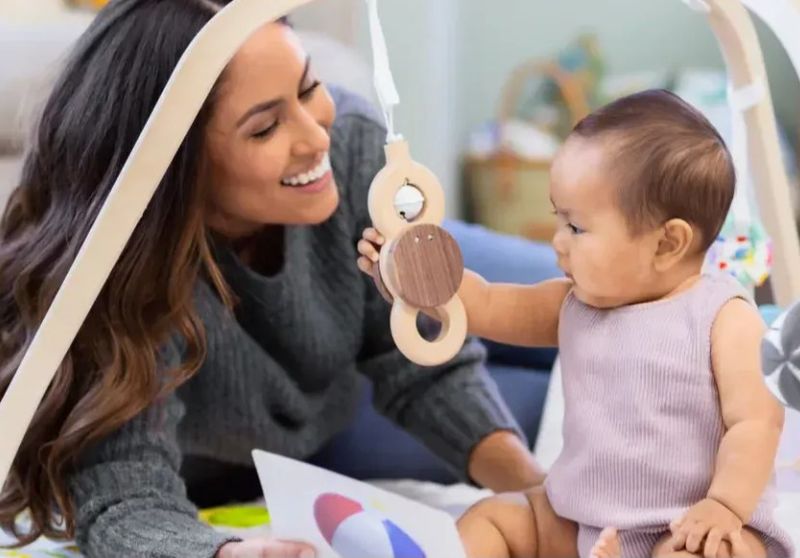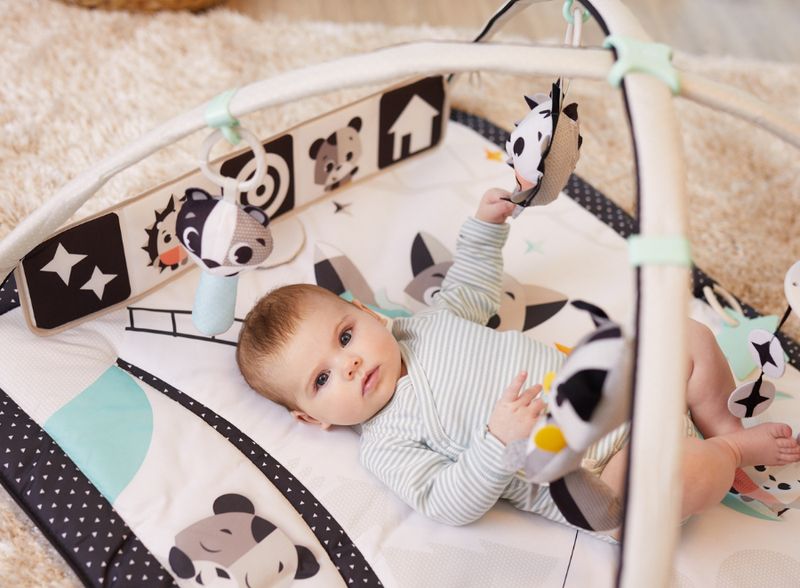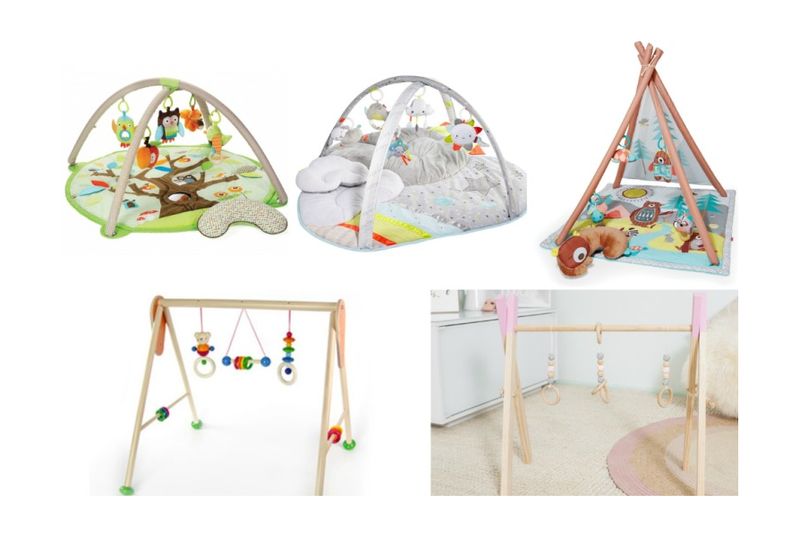
Exploring the Types of Baby Activity Gym in Infant Care
When it comes to caring for your little one, a baby activity gym can be a wonderful addition to your infant care routine. These versatile play structures provide a stimulating and interactive environment for your baby to explore, learn, and develop essential skills.
With a wide range of options available, it’s important to understand the different types of baby activity gym to choose the one that suits your baby’s needs and interests. In this article, we will explore the various types of baby activity gym commonly used in infant care, helping you make an informed decision for your little one.
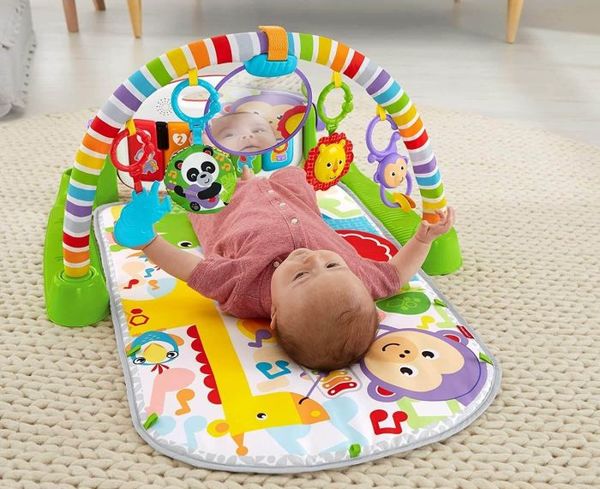
1. Traditional Baby Activity Gyms
Traditional baby activity gyms feature a soft, cushioned mat with arches suspended above it. These arches hold a variety of dangling toys, mirrors, and interactive elements. They often come with detachable toys that can be repositioned or used separately. Traditional baby activity gyms are suitable for newborns and infants up to six months old. They provide a safe and comfortable space for your baby to lie down, kick, reach, and bat at the hanging toys.
Advantages:
- Promote sensory stimulation and hand-eye coordination.
- Encourage tummy time and motor skill development.
- Stimulate visual and auditory senses through colorful toys and soothing sounds.
- Easily portable and can be used both indoors and outdoors.
Considerations:
- Check the quality and safety standards of the materials used.
- Ensure that the toys and attachments are securely attached and free from small parts that could pose a choking hazard.

2. Convertible Baby Activity Gyms
Convertible baby activity gyms offer versatility and adaptability as your baby grows. These gyms often feature detachable arches or panels that can be adjusted or removed to accommodate your baby’s changing needs. As your baby transitions from lying down to sitting up and crawling, the gym can be transformed into a different play configuration to keep them engaged and challenged. Some convertible gyms can even be converted into a play table for toddlers.
Advantages:
- Provide long-term use and adaptability.
- Support different stages of development, from newborn to toddler.
- Offer multiple play configurations and activities.
- Foster creativity and imagination through interactive play.
Considerations:
- Ensure the gym is sturdy and stable in different configurations.
- Check the ease of converting the gym and the durability of the attachments.
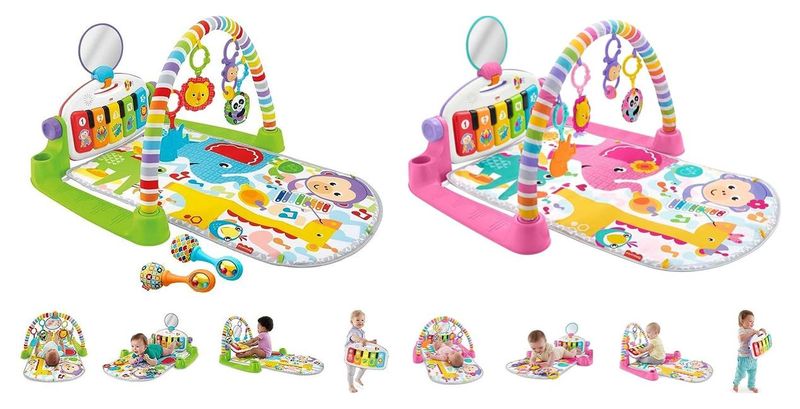
3. Portable Baby Activity Gyms
If you’re a parent on the go or have limited space at home, a portable baby activity gym can be a convenient choice. These gyms are designed to be lightweight, compact, and easily foldable, making them ideal for travel or smaller living spaces. Portable gyms often feature simplified designs with fewer hanging toys and accessories, focusing on providing essential stimulation and play opportunities.
Advantages:
- Easy to transport and store.
- Ideal for travel, visits to relatives, or outdoor play.
- Quick setup and takedown.
- Suitable for apartments or smaller living areas.
Considerations:
- Check the durability and quality of the materials despite the lightweight design.
- Ensure that the gym offers sufficient play opportunities despite the simplified design.
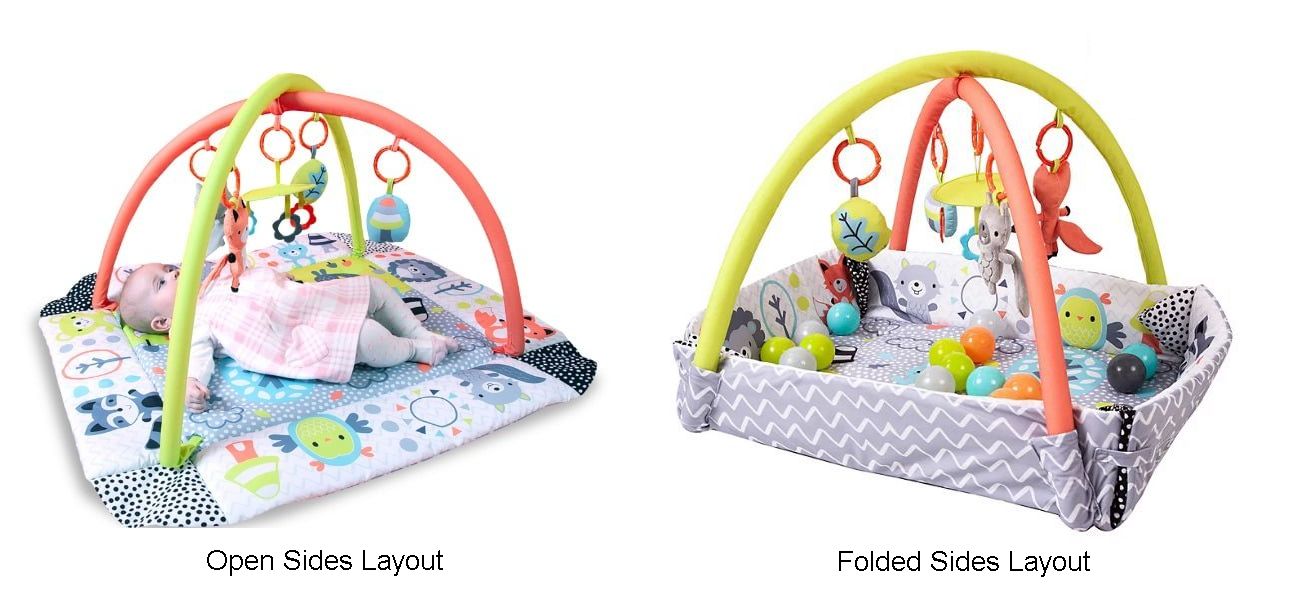
4. Multifunctional Baby Activity Gyms
Multifunctional baby activity gyms are designed to offer a range of play experiences and developmental benefits. These gyms often combine various elements such as music, lights, textures, and interactive toys to engage your baby’s senses and facilitate learning. Some may even feature additional functions like baby bouncers, rockers, or detachable play mats.
Advantages:
- Provide a variety of play experiences and sensory stimulation.
- Enhance cognitive development and problem-solving skills.
- Offer additional features and functionalities for added
Considerations:
- Ensure that the additional functions or features are safe and age-appropriate.
- Consider the size and storage requirements of multifunctional gyms.
- Check the reliability and durability of the additional components.
Conclusion
Baby activity gyms come in various types and designs, each offering unique benefits and features. Traditional gyms provide a stimulating environment for infants, while convertible gyms adapt to your baby’s changing needs. Portable gyms are perfect for parents on the go, and multifunctional gyms offer a range of play experiences. When choosing a baby activity gym, consider your baby’s age, developmental stage, and personal preferences.
Remember to prioritize safety by checking for quality materials, securely attached toys, and adherence to safety standards. Additionally, consider the portability, durability, and ease of use when selecting a baby activity gym.
By selecting the right baby activity gym for your little one, you can create a nurturing and engaging space that supports their growth, development, and overall well-being. Enjoy watching your baby explore, learn, and have fun in their very own activity gym!
We hope this guide has provided valuable insights into the types of baby activity gym available in infant care. For more information and expert advice, feel free to explore our website or visit our main index page.
Remember, your baby’s early experiences lay the foundation for their future development, so invest in a baby activity gym that sparks joy, curiosity, and promotes their overall development.




